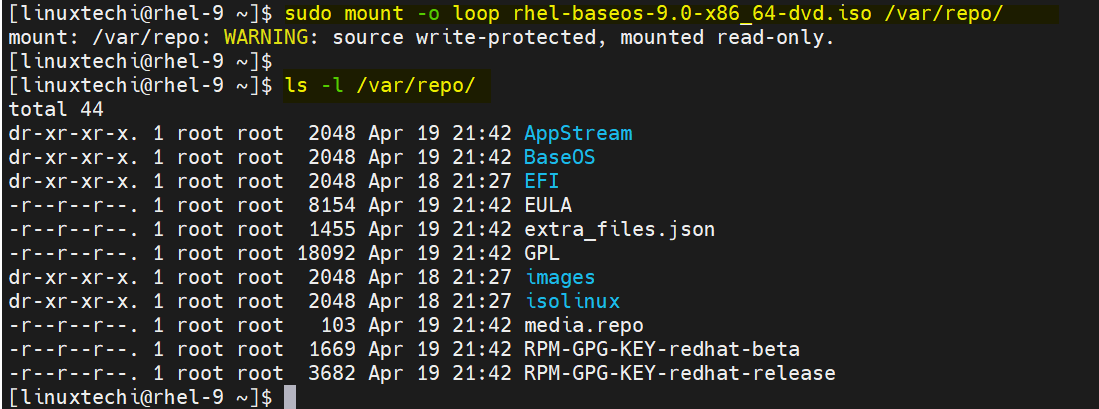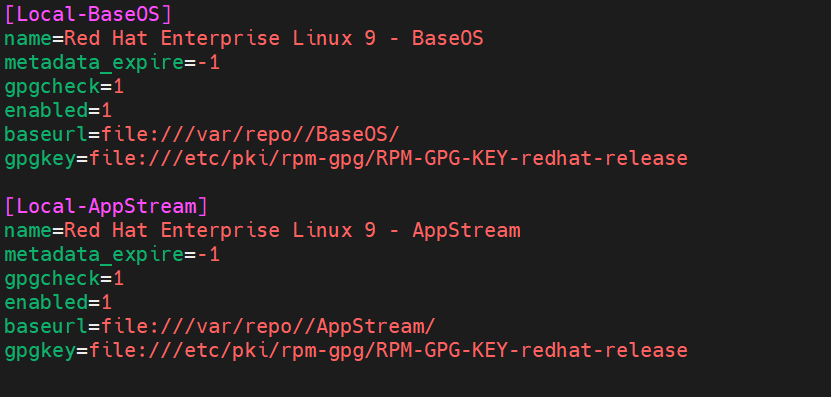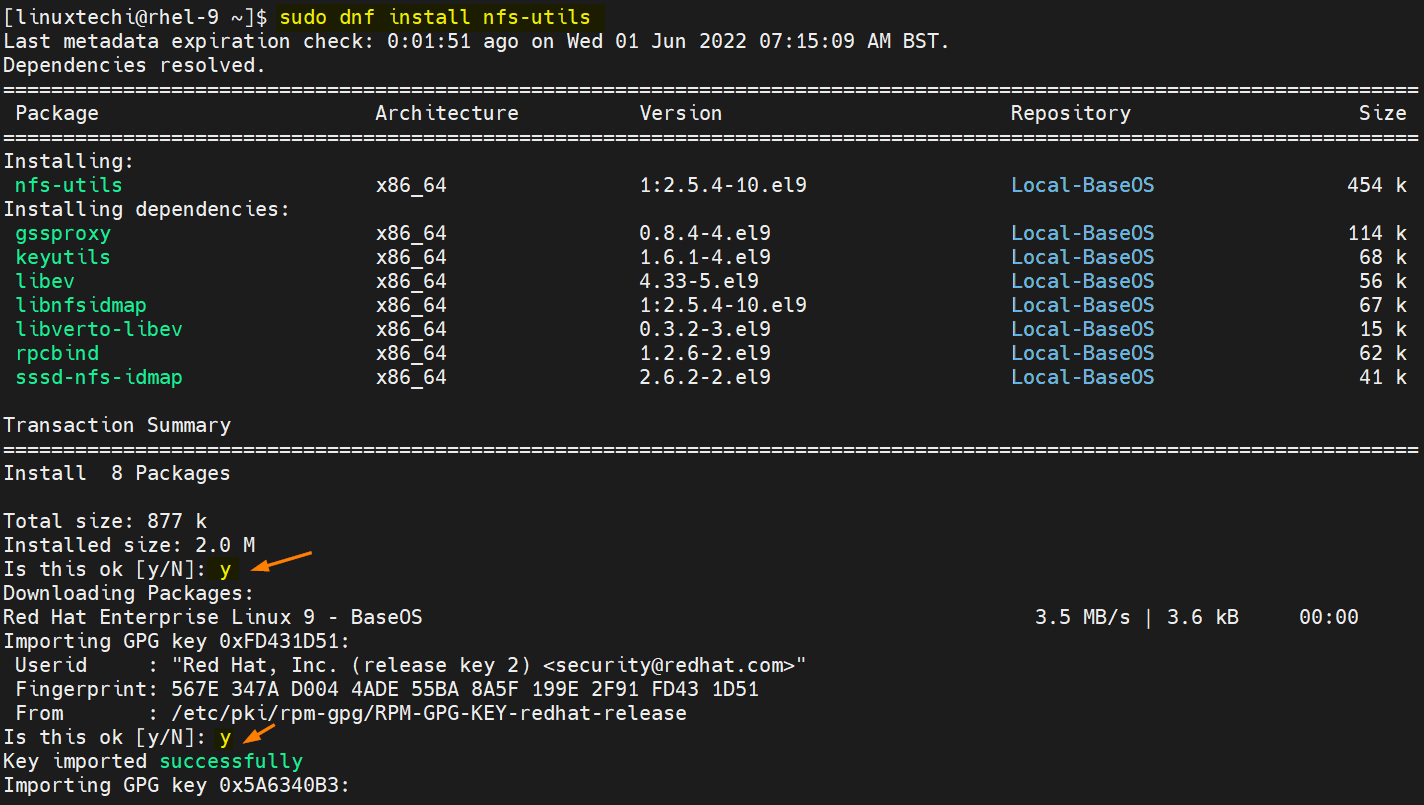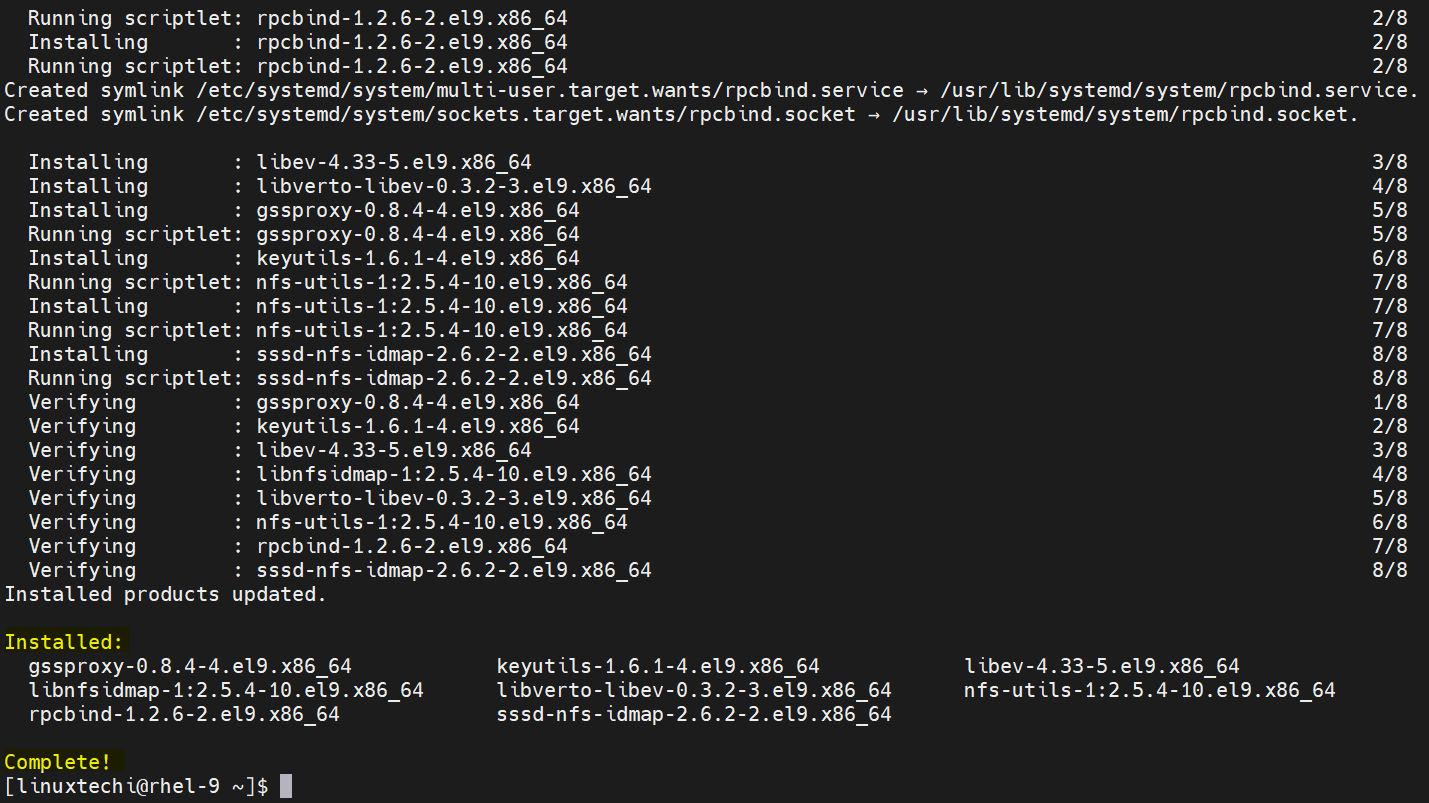Hello techies, recently Red Hat has released its latest operating system RHEL 9. RHEL 9 fulfill all the requirements of hybrid cloud. It can be installed on physical server, virtual machine and inside the container image.
When we don’t have subscription and want to install packages for doing the POCs then setting up local yum or dnf repository will be handy.
In this guide, we will cover how to create local yum/dnf repository on RHEL 9 using DVD or ISO file step by step.
Prerequisites for creating local Yum/DNF repository
- Minimal Install RHEL 9 system
- Sudo User with admin privileges
- RHEL 9 DVD or ISO file
1 ) Mount RHEL 9 ISO File or DVD
We are assuming RHEL 9 iso file is already copied into the system. Run following mount command to mount ISO file on /opt/repo folder.
$ sudo mkdir /var/repo $ sudo mount -o loop rhel-baseos-9.0-x86_64-dvd.iso /var/repo/
In case of dvd, run
$ sudo mount /dev/sr0 /var/repo/
2) Create Repo File in ‘/etc/yum.repos.d/’ Directory
Create a repo file with name ‘rhel9-local.repo’ under the folder /etc/yum.repos.d/ with following content
$ sudo vi /etc/yum.repos.d/rhel9-local.repo [Local-BaseOS] name=Red Hat Enterprise Linux 9 - BaseOS metadata_expire=-1 gpgcheck=1 enabled=1 baseurl=file:///var/repo/BaseOS/ gpgkey=file:///etc/pki/rpm-gpg/RPM-GPG-KEY-redhat-release [Local-AppStream] name=Red Hat Enterprise Linux 9 - AppStream metadata_expire=-1 gpgcheck=1 enabled=1 baseurl=file:///var/repo/AppStream/ gpgkey=file:///etc/pki/rpm-gpg/RPM-GPG-KEY-redhat-release
Save and close the file.
3) Flush Yum/DNF & Subscription Manager Cache
Execute following commands to clean yum or dnf and subscription manager cache.
$ sudo dnf clean all $ sudo subscription-manager clean
In the above output, we are getting a warning message ‘This system is not registered with an entitlement’. So, to suppress this warning message, edit the file ‘/etc/yum/pluginconf.d/subscription-manager.conf’ , change the parameter ‘enabled=1’ to ‘enabled=0’.
$ sudo vi /etc/yum/pluginconf.d/subscription-manager.conf
Save and exit the file.
4) Install Packages using Local Repository
Now we are all set to test our local repository. Run beneath command to view configure repository.
$ sudo dnf repolist
Output,
Now, try Install packages using dnf command via above configure local repository.
$ sudo dnf install nfs-utils
Output,
Perfect, above output confirms that nfs-utils package along with its dependencies are installed successfully via locally configured yum or dnf repository.
That’s all from this guide. I hope you have found it informative. Kindly do post your queries and feedback in below comments section.
Also Read: How to Install PostgreSQL 15 on RHEL 9 Step by Step







The instruction very clearly. Thank you very much
Worked perfectly, thank you very much.
please how did you do this first step
“We are assuming RHEL 9 iso file is already copied into the system. Run following mount command to mount ISO file on /opt/repo folder.”
You need to copy RHEL 9 ISO file to your system and then use mount command to mount it.
In step 1, mounting the iso, you state in the written step port to mount it to /opt/repo. However in your example and display snip, you have it as /var/repo. May be a bit confusing to some.
🙁 it didn’t work for me. After turned enable=0 on /etc/yum/pluginconf.d/subscription-manager.conf. Run sudo dnf repolist and install… All repos were removed.
# sudo dnf clean all
Updating Subscription Management repositories.
17 files removed
# sudo subscription-manager clean
All local data removed
# sudo vi /etc/yum/pluginconf.d/subscription-manager.conf
# sudo dnf repolist
No repositories available
# sudo dnf install nfs-utils
Error: There are no enabled repositories in “/etc/yum.repos.d”, “/etc/yum/repos.d”, “/etc/distro.repos.d”.
When I checked back to the redht.repo. It’s empty file.